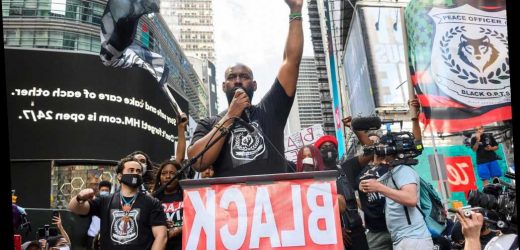More from:
Bob McManus
Howard Rubenstein: An honorable flack who did PR with grace and charm
Oh-oh: NYC's next mayor might actually be worse than de Blasio
De Blasio's push for new ThriveNYC waste is latest low of his fake mayoralty
NYC's suffering from delusion that you can maintain order without coercion
State Comptroller Tom DiNapoli just put the NY pension fund on the road to ruin
The New York Times this past weekend decorated a chunk of its Web site with an emotive snapshot of social disruption on Cleveland’s east side. But the yarn had a big fat hole in it.
The story described a high state of angst among east siders resulting from sustained “gunfire and car crashes” caused in turn by “the combined impact of the pandemic and the recession that have battered the country.”
No doubt this is true, as far as it goes. But it doesn’t go nearly far enough.
The auto accidents are described in some detail (“cars have crashed into a corner grocery store, a home and a beloved local diner”), but the gunplay gets short shrift.
“The Cleveland police reported six homicides in one 24-hour period in November,” the Times reported, which is both appalling and quite true. But here appears the hole in the story: That bloodbath was part of a seven-day shooting binge that took 15 lives — adjusting for population differences, the equivalent of 330 New Yorkers shot dead in the streets over a single week.
The November slaughter brought the city’s 2020 homicide total to 168 (3,700, adjusted), a hair’s breadth closer to its record, 175 (3,850) in 1991. Clevelanders are anxious? You think?
Now the narrative gap grows: While Cleveland may indeed have been battered by the “combined impact of the pandemic and the recession,” it’s also true that the city has been swamped by the same wave of violent crime that has broken over urban America generally since the spring: after George Floyd died in police custody in Minneapolis; after riots rocked the nation; and after a pernicious anti-policing movement began to gain traction in big cities nationwide.
The Times failed even to hint at this, a very big fail, indeed, in a news story dedicated to detailing social disorder in a major US city.
For months, the Gray Lady has offered sympathetic, if not outright promotional, coverage of Black Lives Matter-linked street violence and looting. It has engaged in #DefundThePolice agitation and championed successful efforts to intimidate urban police forces generally. And still the paper seemingly hasn’t tumbled to the clearly foreseeable consequences of such activism.
It’s certainly not just Cleveland that’s suffering. While year-end totals largely are incomplete, Minneapolis was on track for a 72 percent increase in murder compared with 2019, an apparent new high. And records, or near records, for murder were set in cities from Seattle to Louisville to Milwaukee to Philadelphia and all across New York state’s Mohawk Valley, as upstate cities struggled to cope with the effects of anti-public-safety polices handed down by Gov. Andrew Cuomo and the Legislature.
Chicago, always an abattoir, responded to a strong #DefundThePolice demand with a 55-percent hike in murders from 2019, hardly a record by any accounting, but a very disturbing, if unsurprising, trend.
The same was true for the Big Apple, of course: no record, but a terrifying trend line. The NYPD reported 447 murders in 2020, a pale shade of the city’s pre-Giuliani crack-wars carnage, but up an alarming 41 percent from 2019.
As was generally the case everywhere, illegal handguns were the murder weapon of choice in New York, with the NYPD reporting 1,855 shooting victims through year’s end, a 103 percent increase over 2019.
Significantly, given the racialized rhetoric enveloping the entire debate, The Wall Street Journal last weekend reported that as of Oct. 1, a scant 4 percent of the city’s gunshot casualties were white, even as non-Hispanic whites comprise roughly 42 percent of Gotham’s population.
So while no serious person denies that young minority males are doing almost all the shooting, it turns out that virtually all the victims are minorities, too. This seems far more relevant to a debate over racism in policing than “the pandemic and the recession,” significant though they may be.
Let’s face it: Criminals by definition push against social boundaries, as defined by the penal law, and when they find flagging resistance, they are going to push all that much harder. That is, when you demonize your cops, you motivate your criminals, who may be malevolent in spirit and cold of heart, but who aren’t necessarily stupid.
One would think that The New York Times, which has developed trends-in-the-news stories to an art form, would have picked up on this one. Alas, not so. We’re all meant to weep for Cleveland, but the rest of urban America is on its own.
Twitter: @RLMac2
Share this article:
Source: Read Full Article

